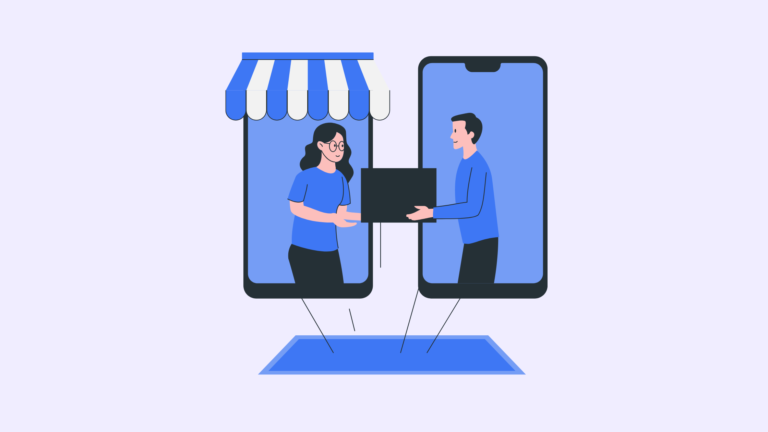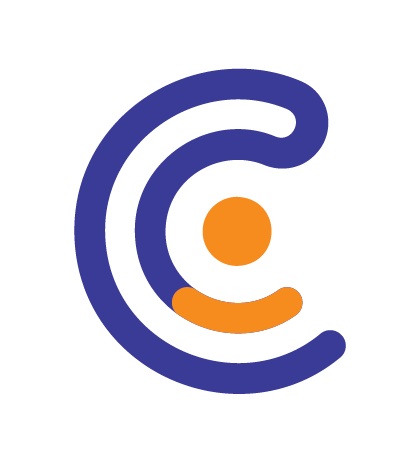In the SaaS and tech industry, winning customers is only half the battle—keeping them for life is what drives long-term profitability and growth.
With increasing competition and rising customer acquisition costs (CAC), businesses must focus on customer retention to maximize customer lifetime value (CLV). Studies show that retaining just 5% more customers can boost profits by 25-95%. Additionally, acquiring a new customer can be 5-7 times more expensive than retaining an existing one.
This blog explores proven strategies to both acquire and retain customers, ensuring sustainable growth. From frictionless onboarding and personalized experiences to proactive customer support and community building, these strategies will help you turn first-time users into long-term advocates.
Let’s dive into the key tactics that successful SaaS and tech companies use to win customers—and keep them for life.
Winning Customers – Strategies for Acquisition
Acquiring customers in the SaaS and tech industry requires more than just great products—it demands precision, personalization, and trust-building. A well-defined acquisition strategy ensures you attract the right audience, deliver value upfront, and create an experience that converts prospects into long-term users.
Let’s explore the key strategies successful SaaS brands use to win customers effectively.
1. Identify and Target the Right Audience
To acquire high-value customers, you need to focus on Ideal Customer Profiles (ICP) and buyer personas. Without a clear understanding of your audience, marketing efforts can become ineffective and costly.
Why ICP and Buyer Personas Matter
- An ICP defines your most valuable customers based on company size, industry, pain points, and purchasing power.
- Buyer personas help segment audiences based on demographics, job roles, and behaviors, allowing for personalized messaging.
Leveraging Intent Data and Behavioral Insights
- Intent data helps you understand when potential customers are actively searching for solutions like yours.
- Behavioral analytics track website visits, content engagement, and trial usage to identify high-intent leads.
Using Account-Based Marketing (ABM) for Targeted Acquisition
- ABM focuses on high-value accounts instead of casting a wide net.
- It aligns marketing and sales teams to deliver personalized outreach, content, and ads to key decision-makers.
- Companies using ABM see a 171% increase in average deal size compared to traditional marketing.
Pro Tip: Use tools like Clearbit, ZoomInfo, and 6sense to gather intent signals and refine your targeting.
2. Offer a High-Value Free Trial or Freemium Model
A free trial or freemium model is one of the most effective SaaS growth strategies, allowing potential customers to experience your product before committing.
How Free Trials and Freemium Models Boost Adoption
- Lower the barrier to entry for users hesitant to purchase immediately.
- Showcase your product’s core value without requiring an upfront payment.
- Encourage hands-on exploration, increasing the likelihood of long-term adoption.
Balancing Feature Limitations vs. Value Demonstration
- Freemium models (e.g., Slack, Dropbox, HubSpot) offer limited free features while encouraging upgrades.
- Time-limited trials (e.g., 14-day or 30-day free trials) provide full access but create urgency to convert.
- Hybrid models (e.g., Notion and Grammarly) offer basic free features with premium enhancements.
Example: How Slack, Dropbox, and HubSpot Win Customers with Freemium
- Slack: Free version supports team collaboration with paid upgrades for advanced features.
- Dropbox: Offers limited storage for free, driving premium subscriptions for more capacity.
- HubSpot: Provides free CRM tools to attract small businesses and convert them into paying users.
Pro Tip: Optimize your trial experience with personalized onboarding emails, in-app tooltips, and live chat support to maximize conversions.
3. Provide a Frictionless Onboarding Experience
Even the best SaaS products can struggle with churn if onboarding is complex or confusing. A smooth, user-friendly onboarding process increases activation rates and ensures long-term engagement.
User-Friendly UI/UX and Guided Walkthroughs
- Minimize friction with a clean, intuitive interface.
- Provide interactive walkthroughs to help users get started without frustration.
- Use progress indicators to show onboarding milestones.
Automated Email Sequences, Video Tutorials, and Live Demos
- Welcome emails should provide quick-start guides and highlight key features.
- Video tutorials help visually explain workflows, making learning easier.
- Live demos and webinars allow direct engagement and answer real-time questions.
Case Study: How Notion’s Intuitive Onboarding Drives Retention
- Notion uses custom templates and an interactive onboarding guide to help new users understand its capabilities.
- A community-driven support system fosters peer learning and engagement.
- As a result, Notion maintains one of the highest user retention rates in the SaaS industry.
Pro Tip: Use tools like Appcues, Userpilot, or WalkMe to create in-app onboarding flows without requiring extensive coding.
4. Build Trust Through Social Proof & Thought Leadership
Trust is a critical factor in SaaS customer acquisition. Buyers look for validation from other users, industry experts, and trusted sources before making a decision.
Leveraging Customer Testimonials, Case Studies, and Review Sites
- 92% of B2B buyers trust peer recommendations over vendor claims.
- Showcase real success stories through case studies and testimonials.
- Maintain a strong presence on review platforms like G2, Capterra, and Trustpilot to build credibility.
The Role of Content Marketing, Webinars, and Industry Reports
- Publishing high-value blog content, whitepapers, and research reports establishes your brand as an industry leader.
- Hosting webinars and expert panel discussions helps nurture prospects and position your brand as an authority.
- SEO-driven content attracts organic traffic, improving lead generation.
How Founders and Executives Can Build Personal Brands on LinkedIn
- Thought leadership posts discussing industry trends and SaaS growth insights enhance credibility.
- Engaging with customers through comments and discussions builds relationships.
- Example: HubSpot’s executives regularly share marketing insights on LinkedIn, reinforcing trust and authority.
Pro Tip: Invest in a robust social media presence and community-building efforts to strengthen brand loyalty.
Keeping Customers for Life – Retention & Loyalty Strategies
Winning customers is just the first step in the SaaS and tech industry—keeping them engaged and loyal is the real challenge. High churn rates can cripple growth, while strong retention increases customer lifetime value (CLV) and creates brand advocates.
Here are five proven strategies to retain customers, increase loyalty, and maximize long-term revenue.
1. Continuously Improve Customer Experience
In SaaS, customer experience (CX) directly impacts retention. A frustrating interface or a lack of engagement can lead to churn, while a seamless experience keeps users invested.
Monitoring User Behavior and Feature Adoption
- Track in-app behavior and feature usage to understand what keeps users engaged.
- Use heatmaps, session recordings, and event tracking to identify friction points.
- Personalize the experience based on usage patterns.
Leveraging AI-Driven Insights and Predictive Analytics
- AI-powered tools analyze data to predict churn and suggest actions.
- Behavioral analytics identify struggling users and trigger automated interventions.
- Proactive support messages and custom recommendations enhance engagement.
Example: How Intercom Uses AI-Powered Chatbots to Enhance CX
- Intercom’s AI-driven chatbots proactively assist users based on real-time behavior.
- Predictive analytics identify potential churn risks and offer personalized solutions.
- As a result, Intercom increases customer engagement and satisfaction significantly.
Pro Tip: Use tools like Mixpanel, Amplitude, and Gainsight to monitor customer interactions and optimize experience.
2. Deliver Exceptional Customer Support
In SaaS, customer expectations for fast, effective support are higher than ever. Poor customer service is a major reason for churn, while proactive, multi-channel support drives loyalty.
Offering Multi-Channel Support (Live Chat, Email, Phone, Knowledge Base)
- Live chat and AI chatbots provide instant responses.
- Email and phone support cater to complex queries.
- Self-service knowledge bases empower users to solve problems independently.
Implementing Self-Service Support Options to Reduce Friction
- SaaS leaders provide FAQs, community forums, and how-to guides to reduce reliance on support teams.
- Automated ticketing systems prioritize urgent issues while resolving simple queries instantly.
How Zendesk’s Proactive Customer Service Model Increases Retention
- Zendesk uses AI-driven automation to prioritize and categorize support tickets.
- Their multi-channel approach ensures users get support on their preferred platforms.
- As a result, Zendesk customers experience faster resolutions and better satisfaction scores.
Pro Tip: Use tools like Zendesk, Freshdesk, and Help Scout to build an efficient customer support ecosystem.
3. Leverage Customer Feedback for Continuous Growth
Understanding what your users love (and hate) is essential for retention, product development, and customer satisfaction.
Importance of NPS (Net Promoter Score), CSAT (Customer Satisfaction Score), and Surveys
- NPS measures customer loyalty by tracking likelihood to recommend your product.
- CSAT evaluates immediate satisfaction after customer interactions.
- Regular feedback surveys help improve features and resolve pain points.
Turning Negative Feedback into Product Improvements
- Actively address pain points raised in reviews and surveys.
- Communicate feature updates and fixes transparently to show responsiveness.
- Prioritize requests that align with customer needs.
Example: How Zoom Refines Its Platform Based on User Feedback
- Zoom tracks NPS and user surveys to understand customer challenges.
- Based on feedback, Zoom has enhanced security, improved UI, and optimized performance.
- These improvements have boosted retention and strengthened customer trust.
Pro Tip: Use feedback tools like Typeform, Hotjar, and Survicate to collect and analyze customer opinions.
4. Maximize Customer Lifetime Value Through Upselling & Cross-Selling
Increasing revenue from existing customers is cheaper and easier than acquiring new ones. Smart upselling and cross-selling strategies help boost customer lifetime value (CLV).
Identifying Expansion Opportunities Within Existing Customer Accounts
- Use customer data to identify power users and offer tailored upgrades.
- Segment users based on engagement and business needs to target relevant add-ons.
Using Data-Driven Recommendations and Usage Analytics
- AI-powered recommendation engines suggest premium features based on usage patterns.
- Personalized emails with limited-time discounts encourage upgrades.
How HubSpot Successfully Upsells Customers with Tailored Upgrade Plans
- HubSpot offers progressive pricing tiers with increasing value for scaling businesses.
- Customers using the free CRM receive upgrade prompts based on their team size and needs.
- This strategy has helped HubSpot maintain high retention rates and expand revenue.
Pro Tip: Use Pendo, ProfitWell, and Crossbeam to identify upsell opportunities and execute personalized offers.
5. Build a Customer Community & Brand Loyalty
Creating a strong customer community enhances engagement, fosters advocacy, and builds long-term brand loyalty.
The Power of Online Communities (Forums, Slack Groups, LinkedIn Groups)
- Exclusive user groups encourage peer-to-peer learning and collaboration.
- Gamified engagement (badges, rewards, leaderboard rankings) strengthens retention.
Encouraging Customer Advocacy Through Referral Programs and Ambassador Initiatives
- Referral incentives encourage loyal customers to bring in new users.
- Ambassador programs reward engaged customers who share success stories.
Example: How Notion’s Ambassador Program Fuels Organic Growth
- Notion’s ambassador community shares templates, tips, and best practices.
- This organic promotion has significantly reduced marketing costs while increasing user acquisition.
Pro Tip: Platforms like Circle, Mighty Networks, and Discourse help brands build active communities.
Conclusion
Winning customers is just the beginning; keeping them for life is what drives sustainable growth in the SaaS and tech industry. By focusing on a seamless onboarding experience, exceptional customer support, continuous improvements, and data-driven engagement, businesses can boost retention and lifetime value.
A strong community and personalized customer experience foster loyalty, while upselling and cross-selling maximize revenue. Prioritizing customer success not only reduces churn but also transforms users into brand advocates.
Start implementing these strategies today to build lasting relationships, enhance customer satisfaction, and drive long-term success in your SaaS business. Retention is the key to scale!



